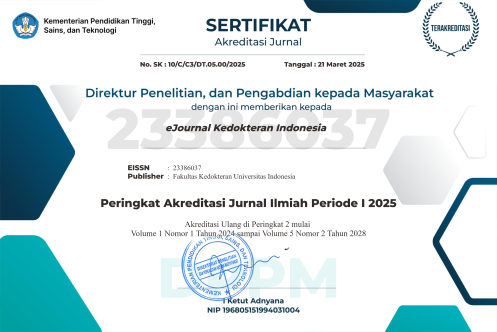Management of Maxillofacial Injuries with Palatal Fracture
DOI:
https://doi.org/10.23886/ejki.12.711.90Keywords:
submental intubation, maxillofacial injuries, mini-plate, palateAbstract
Maxillofacial injuries, especially palatal fractures, often result from high-energy trauma, posing a challenging treatment. Achieving good occlusion is crucial, particularly when palatal fractures are associated with Le Fort fractures. While tracheostomy has traditionally been the airway management option, submental intubation serves as an alternative. The objective of this report is to illustrate a case of palatal fractures associated with Le Fort fractures in a 12-year-old female following a motorbike accident. She was admitted to dr. Cipto Mangunkusumo Hospital with Le Fort I and II fractures and palatal fractures. The treatment plan included submental intubation, the application of wire and arch bars, and the use of plates and screws. The patient experienced a good recovery without complications. Compared to submental intubation, tracheostomy requires a significantly longer time and often necessitates scar revision. No significant difference was observed in post-operative occlusal stability between intra-arch wire and mini-plate. In conclusion, limited direct comparisons exist between submental intubation, tracheostomy, intra-arch wire, and miniplate for palatal stabilization. Submental intubation is a faster and less complication-prone alternative to tracheostomy in maxillofacial surgical procedures. However, evidence regarding the superiority of intra-arch wire or mini plate for palate stabilization remains inconclusive.
Downloads
Downloads
Published
How to Cite
Issue
Section
License
Copyright (c) 2024 Trimartani, Shally Adhina Putri, Dyah Astri

This work is licensed under a Creative Commons Attribution-NonCommercial 4.0 International License.



